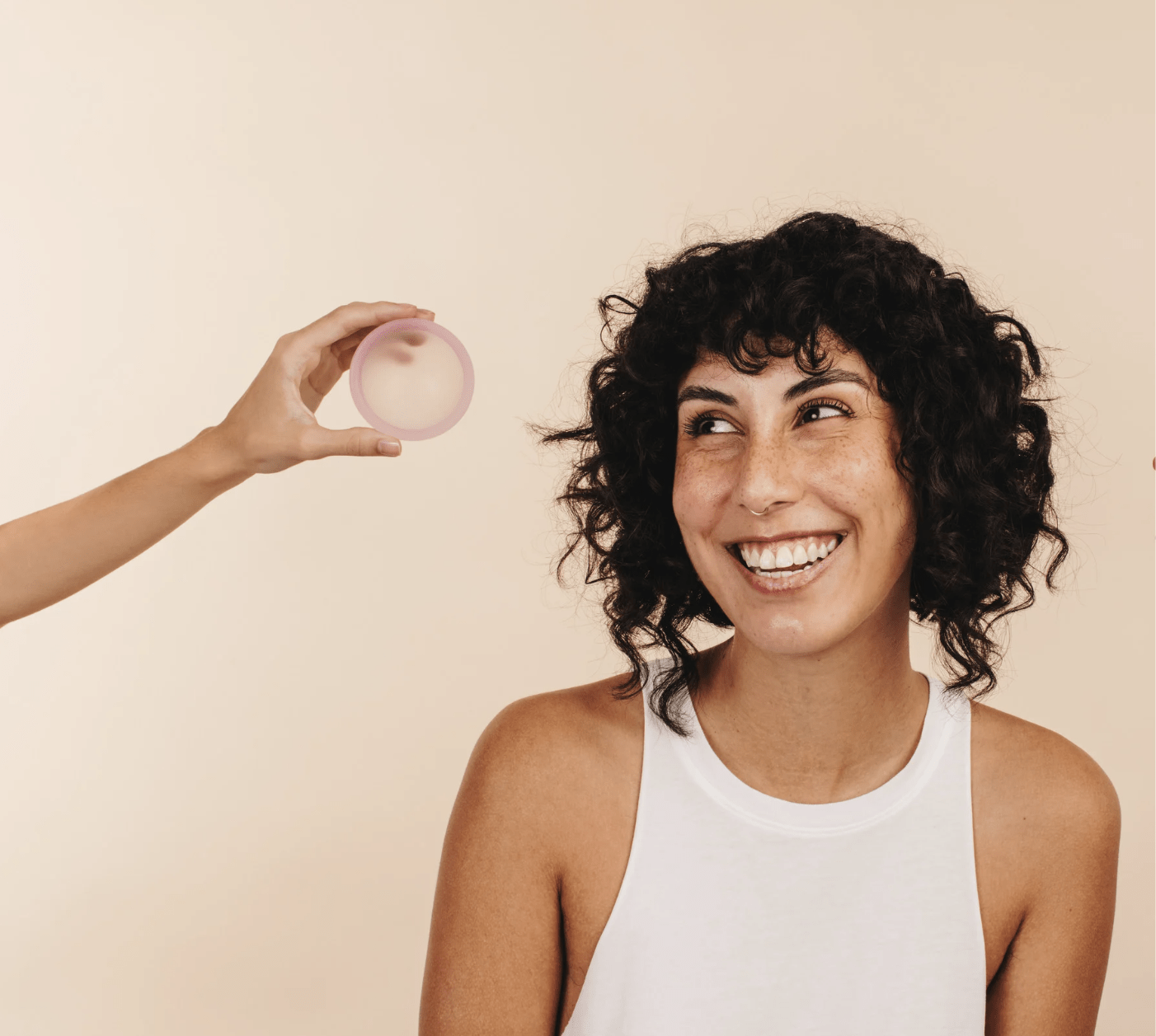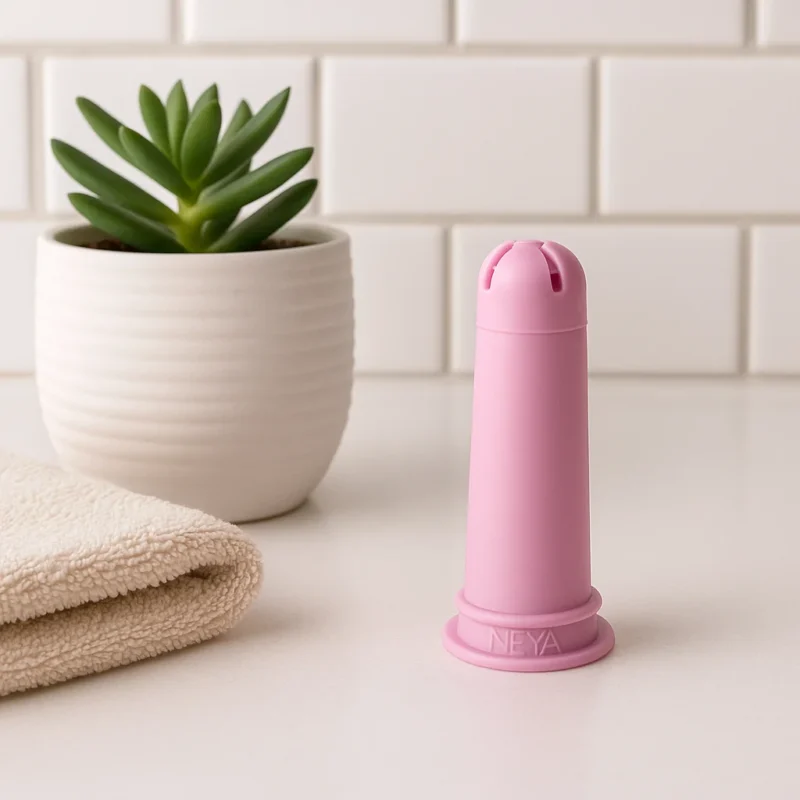Are Menstrual Discs Safe? [What You Need to Know]

Period care has come a long way from the days when pads and tampons were the only options. Menstrual cups broke into the mainstream first, and now menstrual discs are gaining popularity for their comfort, longer wear times, and eco-friendly benefits. They are flexible, discreet, and can fit into almost any lifestyle, whether you have long workdays, play sports, or simply want fewer changes during your period.
If you have seen them on TikTok or heard about them from friends, you might be asking: Are menstrual discs safe? The answer is yes. When used correctly, menstrual discs are considered safe by healthcare professionals. In this guide, we will cover what they are, what experts say about safety, the benefits they offer, and how the NEYA menstrual disc applicator can make them even easier and more hygienic to use.
What is a Menstrual Disc and How Does It Work?
A menstrual disc is a small, flexible product that sits just below the cervix and collects menstrual fluid rather than absorbing it. This placement helps protect the vagina’s natural pH and moisture balance according to Healthline.
Menstrual discs come in both reusable designs made from medical-grade silicone and disposable options. Reusable discs can last for years with proper care, while disposables are intended for single use. They can be worn for up to 12 hours, hold more fluid than tampons or pads, and, in some cases, can even be worn during penetrative sex without interfering.
Are Menstrual Discs Safe?
Medical experts agree that menstrual discs are safe when used as directed. Although large-scale studies on discs are limited, they are made from the same types of materials and positioned similarly to menstrual cups, which have been extensively researched. A review in The Lancet Public Health found menstrual cups have an extremely low risk of toxic shock syndrome (TSS), no higher than tampons.
OB-GYNs recommend the same safety precautions for discs: always wash hands before insertion and removal, follow wear-time limits, and clean reusable discs thoroughly between cycles.
Menstrual Disc Benefits for Heavy Flow and Busy Lifestyles 
One of the top reasons people switch to menstrual discs is capacity. Research in BMJ Sexual & Reproductive Health shows discs can hold an average of 61 milliliters of fluid, with some holding up to 80 milliliters.
This higher capacity means fewer changes during the day, which is especially helpful for heavy flow days, long work shifts, travel, or outdoor activities. The ability to wear a disc for up to 12 hours also makes it a convenient option for people who value flexibility in their period care.
How to Use a Menstrual Disc Safely
Using a menstrual disc safely comes down to three key things: following the manufacturer’s instructions, keeping everything clean, and making sure it is positioned correctly. Here’s a detailed breakdown to help you get it right from day one.
1. Follow the 12-Hour Wear Time Limit
Most menstrual discs are designed to be worn for up to 12 hours, depending on your flow. Going beyond that time can increase the risk of bacterial growth, which is linked to conditions like toxic shock syndrome (TSS) (CDC). If you have a heavier flow, you might find that you need to empty it sooner to avoid leaks and maintain comfort. Setting a phone reminder can be helpful, especially if you are new to using a disc and still learning your cycle patterns.
2. Wash Your Hands Before and After Insertion
Clean hands are your first line of defense against introducing bacteria into the vaginal canal. Use warm water and mild soap, and be sure to scrub for at least 20 seconds before and after handling the disc. If you are not near a sink, using an alcohol-based hand sanitizer is better than skipping this step.
3. Insert in a Comfortable Position
Some people prefer inserting a disc while sitting on the toilet, others while standing with one leg on the edge of the tub or squatting slightly. Try different positions to find what works best for you. If you are using the NEYA menstrual disc applicator, secure the disc into the applicator’s grip area before insertion, then gently guide it toward your lower back until it is fully in place beneath the cervix.
4. Ensure Proper Placement
A properly positioned disc should rest comfortably under the cervix with the front rim tucked behind your pubic bone. This placement creates a seal that prevents leaks. You can check placement by running a clean finger around the edge to confirm it is open and flat. If it feels folded or tilted, gently adjust it.
5. Empty and Rinse the Disc Correctly
When it’s time to empty your disc, wash your hands first. Hook your finger under the rim and gently pull the disc out, keeping it level to avoid spills. Dispose of the contents in the toilet, then rinse the disc under running water. If you are in a public restroom without a private sink, you can wipe it with a clean tissue and reinsert it until you have access to water.
6. Clean Reusable Discs Thoroughly
Reusable discs should be washed with mild, fragrance-free soap and warm water after each use (Healthline). Avoid harsh cleansers, which can degrade the material. At the end of your cycle, sterilize your disc by boiling it for the amount of time specified by the manufacturer. Let it fully dry before storing it in a breathable pouch.
7. Replace Discs on Schedule
Disposable discs should only be used once. Reusable discs have a set lifespan, often several years, but this can vary based on the brand and frequency of use. Check your manufacturer’s guidelines and replace your disc if you notice cracks, discoloration, or changes in texture.
By following these steps consistently, you not only protect your health but also get the best performance out of your menstrual disc. And if you are still learning the technique, tools like the NEYA period disc applicator can help you get comfortable faster, minimize mess, and ensure reliable placement every time.
Possible Risks and How to Avoid Them
While rare, TSS can occur with any internal menstrual product, including discs, if worn longer than recommended according to the Centers for Disease Control and Prevention. Incorrect placement may lead to leaks or discomfort, and material sensitivity is possible for some users. These risks can be greatly reduced by following the 12-hour wear rule, practicing good hygiene, and using quality products.
Why the NEYA Applicator Can Make a Difference
For new users, insertion can sometimes feel awkward. The NEYA menstrual disc applicator makes it easier by securely holding the disc and guiding it into place at the correct angle. This helps maintain hygiene, ensures proper placement, and reduces the need for multiple adjustments.

An applicator is especially useful when you are on the go, in a public restroom, or in situations where handwashing before and after is not as convenient.
The Bottom Line on Menstrual Disc Safety
Menstrual discs are a safe, effective, and convenient option for period care when used according to instructions. They offer longer wear times, higher capacity, and a level of comfort that appeals to many people. Pairing your disc with a quality applicator can make the process cleaner, more comfortable, and more beginner-friendly.
By following good hygiene practices and listening to your body, you can confidently make menstrual discs a regular part of your period routine.
